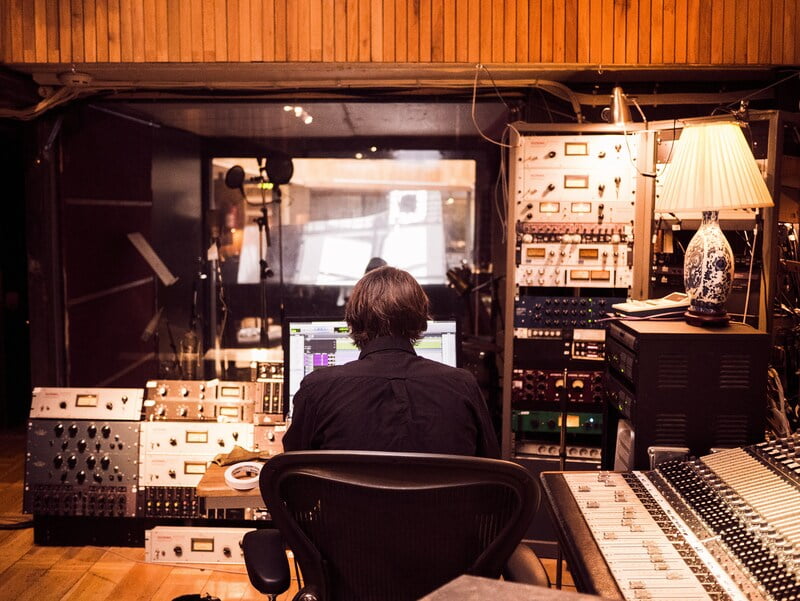If you’ve ever tried watching your favourite thriller film without sound, you’ll notice it’s not nearly as scary as you thought. Yet, pinpointing exactly what you’re missing beyond the general term ‘sound’ can be challenging. Each detail might just reveal sound design secrets that dramatically shape your viewing experience.
Was it the spine-chilling echo of footsteps in a deserted alley?
The sound of water dripping from a crack in the concrete?
The nearly imperceptible sound of our hero’s hand clutching tightly to the grip of his gun?
Or perhaps it was the subtle soundtrack that makes the hair on your neck stand?
Was it all of these combined, or is there something that stands out?
What you’re really missing is the most underrated element in filmmaking—sound design—not only in its individual elements but also in its cohesive cinematic experience.
When thoughtfully executed, sound design brings your story to life.
It compensates for moments when actors might miss the mark, covers for the absence of fancy visual effects, and can make your film feel like a big-budget Hollywood blockbuster by capturing the exact atmosphere you envisioned in your script.
But we’re doing more than just explaining how it works; today, we’re going to show you how to use it for your next project. You’ll learn:
- How sound design works and why it’s so important
- How to avoid common mistakes filmmakers usually make
- How you can use its individual elements to set the mood for your film
- How to create your own style (yes, you can develop your signature sound design style).
But first, let’s answer a straightforward question.
What is Sound Design Anyway?
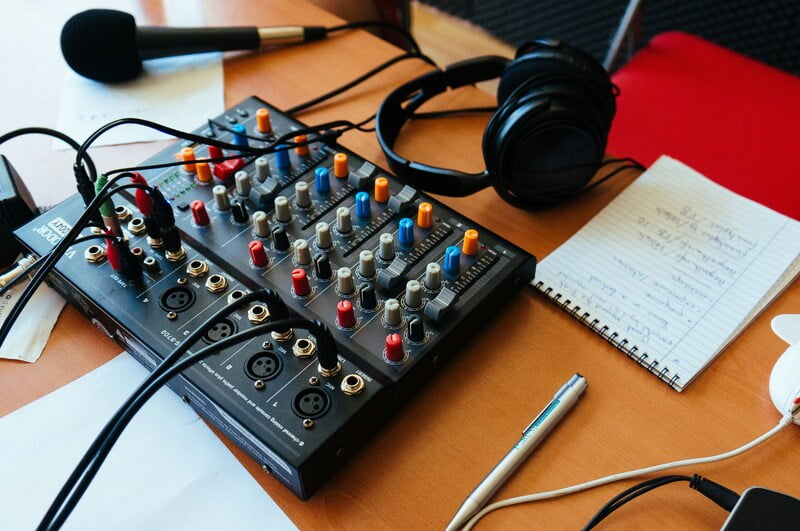

Sound design is the art of blending everything that has to do with audio in a film, from dialogue and folly sounds (sounds created in a sound studio) to music and sound mix. It’s simple, yet true – film is an audio-visual art, and sound matters.
If there are any skeptics out there, direct them to the simple change in soundtrack in Bruce Lee’s iconic encounter with Chuck Norris in “Way of the Dragon” (1972), which transforms the preparation for the iconic fight scene into a romantic intro.
The Power of Sound in Film
Being the primary audio-visual medium (we’ll overlook the 5D and 7D wonders for this article), film can engage our senses on another level compared to books or music.
While you can imagine places and worlds while listening to Bach, or envision the perfect actor for the role of Alexai Ivanovich while reading Dostoyevsky’s “The Gambler” (you picked Daniel Day-Lewis too, right?), film uniquely directs what you hear and see in real time.
Before we dive into steering your sound design cruiser in the right direction, let’s make sure there aren’t any cracks in the hull of the ship.
01 Make Sure Your Actors Will Be Heard
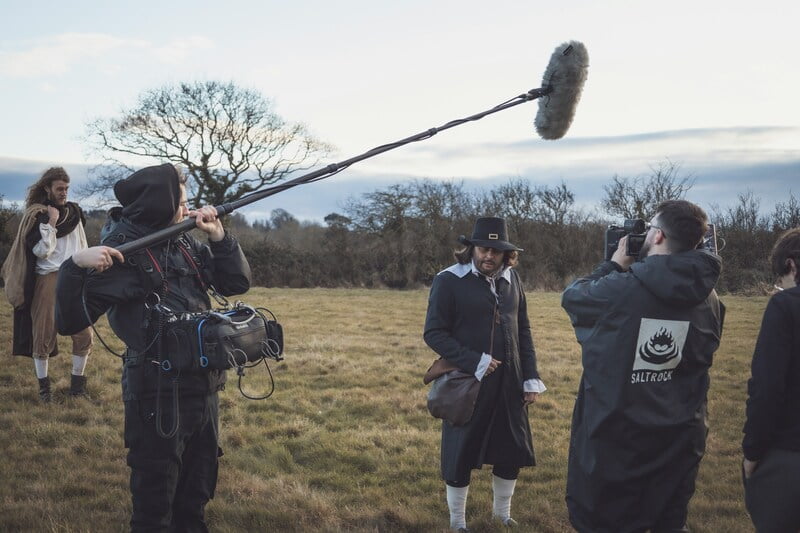

Most viewers won’t notice if you shot your film on an older 4K Red camera instead of the new V Raptor XL model. But they will certainly object if they can’t understand what the characters are saying.
Optimising On-Set Sound Equipment
Ideally, you want a mic on each actor who speaks, a boom mic following the actors, and an additional mic if your actors stay still. If the dress your principal actress is wearing makes noise when she moves, that extra mic you’ve hidden near the soup bowl on the table will really come in handy.
If you need to cut the budget, do it on the camera, not on sound.
And since you have those mics, take advantage of the SFX you find on location.
02 Record SFX on the Set
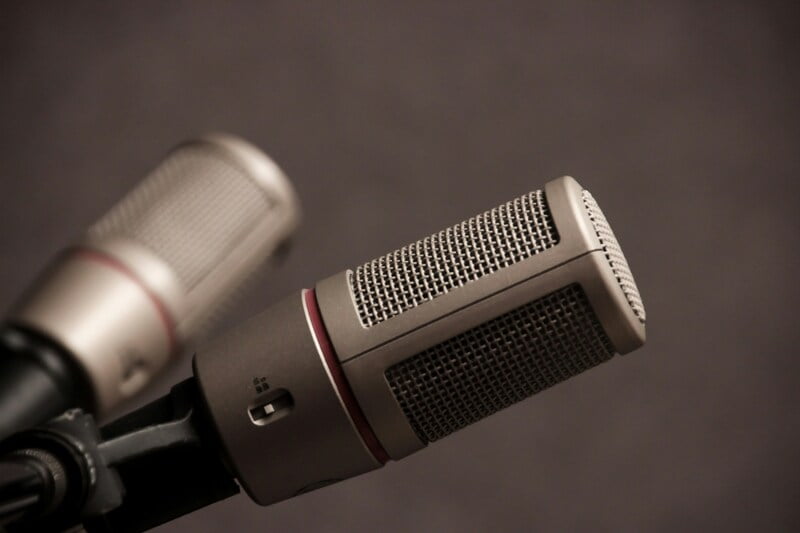

While SFX can be recreated in the studio or taken from a sound base, sometimes “the natural” sounds you hear during shooting can be gold.
Silence all background noise, such as AC and fridges during dialogue, but record these sounds and use them in the editing room.
Capturing Authentic Sound Effects On-Location


The hum of an old fridge might be the perfect sound for an uncomfortable silence between your principal actors.
The actor who took off those click-clacking shoes can walk in them off-camera, allowing you to use this sound later to indicate he’s walking away without showing him.
High-budget Hollywood films might have a million-dollar budget to use in studios to record folly sounds, but you can be just as efficient if you set aside additional time to record these on the set.
If you have a sound recordist on the set, he’ll know what to do. If you’re doing it yourself, here’s the drill:
- Announce you’re doing off-screen recording.
- Ask all crew members to stand still for a minute or two.
- Record the source for at least 30, ideally 60 seconds without interruption.
Now that you’ve got the sound, how do you use it?
03 Let Them Hear, Don’t Show
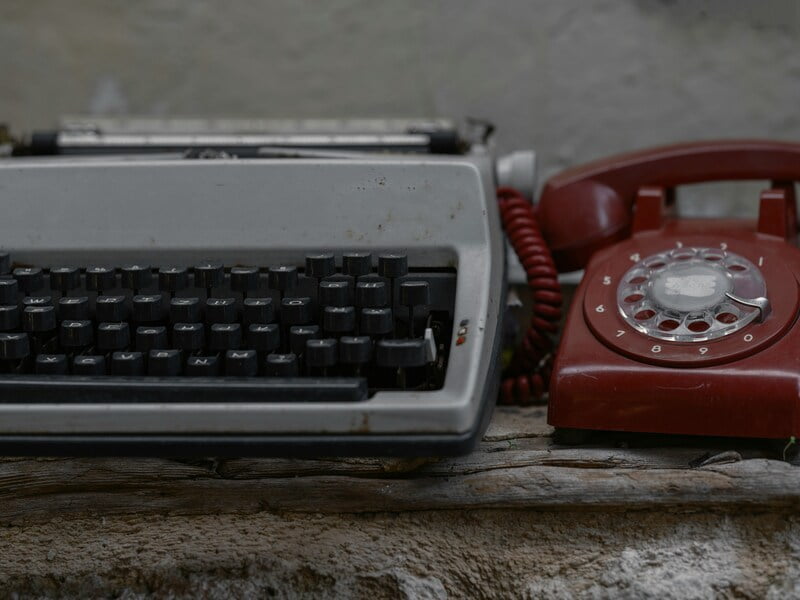

Just as you use “show, don’t tell” for storytelling, you can use sound to create an atmosphere not shown visually.
After censors labeled De Palma’s “Scarface” as “Over 18” for chainsaw scenes depicting explicit visual violence, the director objected by stating that there is not one shot showing contact between the chainsaw and the character shown in the scene.
It turns out De Palma was right.
It’s the sound of the chainsaw cutting into the character’s skin, paired with Pacino turning his head away in horror, that will make you do the same.
While visual effects tend to not age well, smart sound design remains evergreen.
Use Sound to Enhance Narrative
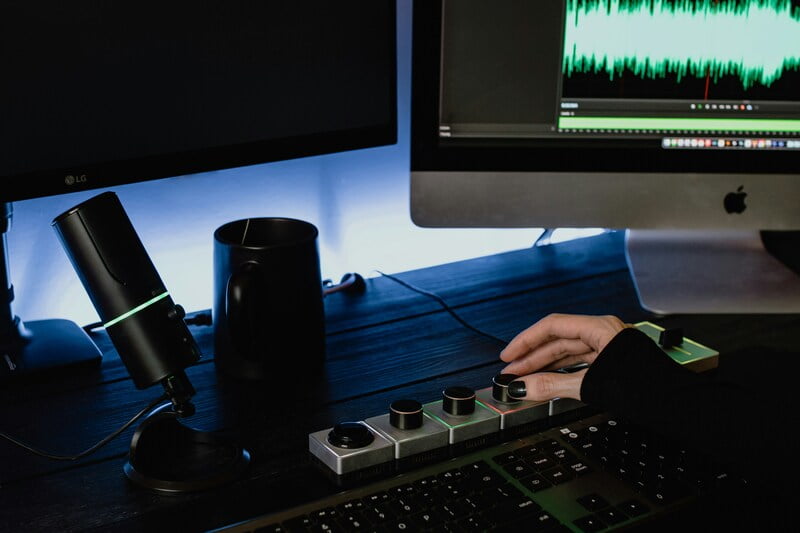

While “Scarface’s” sound design aims at showing how violent and brutal a gangster’s world works, you can use this technique for almost any scene you’re filming.
Imagine you’re shooting dialogue between two businessmen in an office and you want it to resemble the atmosphere of a busy uptown office.
What usually gives away a cheap production is – extras, production design, and… well, sound.
How do you make it look fancy?
Think about the SFX that give away a busy office – footsteps, doors closing and opening, people chattering in the background, the sound of a coffee machine, etc. “Mad Men” got that perfectly.
04 Make a perfect Audio Sandwich
As viewers, we’re drawn into the main characters discussing the marketing campaign and Pete and Peggy quietly sharing their secret. But did you catch the key ingredient that convincingly portrays this as a bustling office filled with activity?
Sound of traffic coming from outside, employees’ chatter, telephone ringing, people walking, and the exclusive sound of the ’60s—typewriter.
The Essence of Background Noise
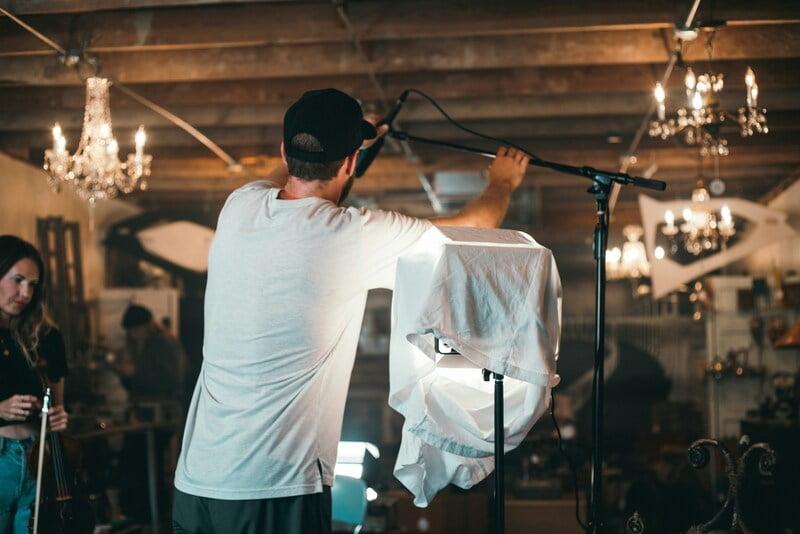

Bear in mind that at any given moment, there are not more than four extras in the background.
Does it make sense for the phone to ring every 10 seconds and for a dozen typewriters to be clacking away throughout the entire scene? Not really.
Do you actually pick up on these sounds unless you’re explicitly focusing on them? Probably not.
But do they successfully create the ambiance of a busy New York marketing agency? Absolutely.
Setting the expectations for the atmosphere also allows you to play with it when you want to set the mood for a big change that’s going to take place.
Manipulating Sound for Narrative Impact
Take a look at this scene from the same show. This is set when the agency is leaving the building as it is being merged with another agency.
The sounds of typing and ringing phones fade away, replaced by footsteps and chatter that suggest a shift towards something new and unknown.
As Don Draper walks down the stairs, all the background noise drops off, setting the stage for a surreal moment that feels like a Broadway musical, performed by his late colleague—a scene only he can see.
Even though this is a big-budget prime-time show, it’s the sound design that really makes this surreal scene come alive for viewers.
So, what are the key ingredients for our sound sandwich?
The Art of Listening to Your Environment


First, really “listen” to your location and pick up its unique sounds.
Maybe it’s the hum of machines in the factory where your main character works, or the calls of nightingales, chirping crickets, the rustle of wind and leaves where your actors are strolling through the woods.
It could be the noise of an AC unit, the fridge humming, ice clinking in a glass, or the distant traffic while your characters relax in the living room on a warm summer evening.
You don’t even need to be there in person to know what these sounds are like.
Pretty simple, right?
But here’s the thing—like any good sandwich, it’s not just about the individual ingredients. It’s how you blend them together that really tells the story.
Balancing the Audio Mix
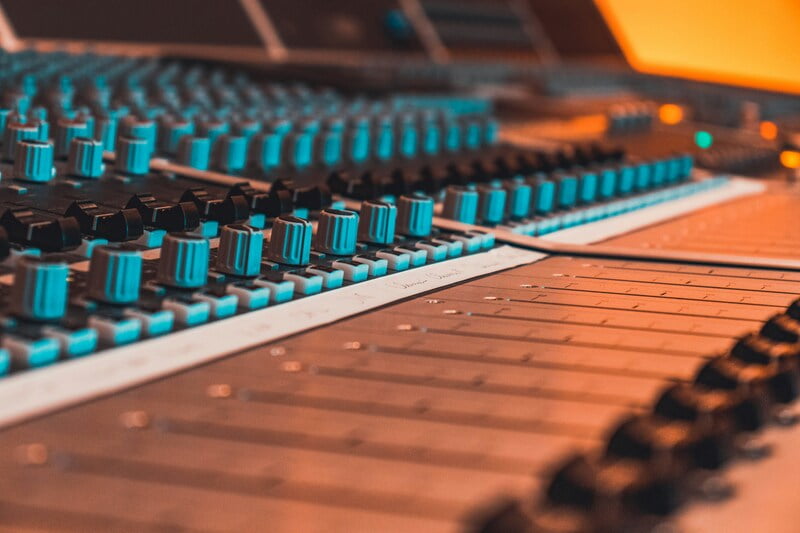

Walter Murch, one of the greatest film editors of all time, really got to grips with this while working on the sound design for Coppola’s Apocalypse Now, a project that earned him an Oscar.
Murch and Coppola knew that this war epic would be as much about sound as it was about visuals.
As a pioneer of multichannel audio, Murch packed the battle scenes with all the signature war sounds—helicopter blades, falling grenades, flying bullets, wounded soldiers screaming, and commanders shouting orders.
You’d think incorporating all these sounds would perfectly capture the chaos of a battlefield, right?
Surprisingly, it just left the audience confused.
Why? Because of human adaptability.
Just like moving from a quiet place to a noisy one. At first, all the sounds are overwhelming, but soon you stop noticing them, even though they’re still there.
In films, though, sound works differently than in real life.
Shift the Audio Perspective
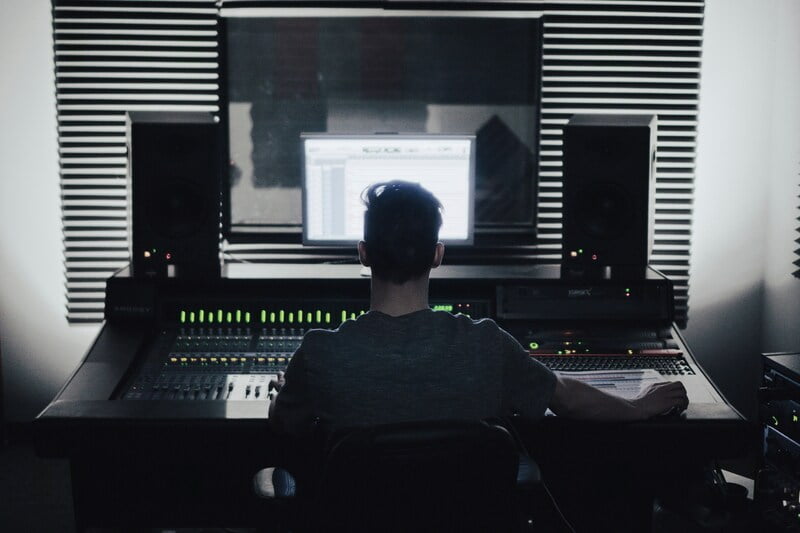

We’re constantly shifting scenes and perspectives, and viewers need cues to follow along.
Murch discovered that not all sound effects are created equal for a particular scene.
Realizing this, he began to dial some sounds down and others up, depending on the scene’s needs—a tactic that turned out to be highly effective.
You can use this principle in your own films.
For instance, the sound of chopping vegetables might be a background noise in reality, but in your film, you can make it a focal point to underscore the tension in a scene where your main character is bursting with anger at her boyfriend.
In the editing room, it’s all about highlighting certain sounds over others, regardless of their real-life volume or presence.
Now that we’ve nailed the SFX, it’s time to fine-tune some music, but remember to handle it with care.
05 Be Cautious With The Music
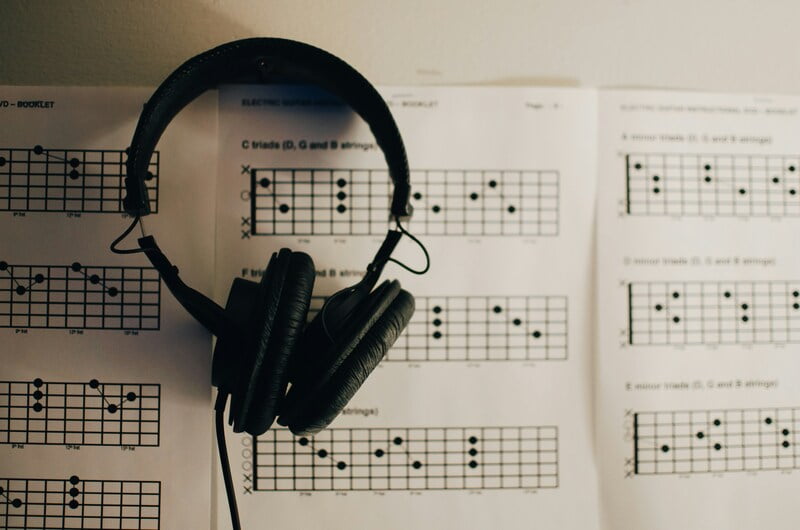

It might be tempting to use that awesome track your friend created just for your film, but remember, music really ramps up the emotions in a scene, for better or worse.
Adding additional music to the scene with actors that already deliver can push it overboard and turn it into a cheesy scene.
Remember, music should complement, not compete with, the on-screen action.
If you plan to use music in this sense, use these two guidelines:
Assess the Scene’s Emotional Base


Keep the music subtle. This lets the actors’ nuanced performances shine through, conveying deep emotions and building a strong connection with the audience without any noise getting in the way.
Choose Music that Supports, Not Overwhelms
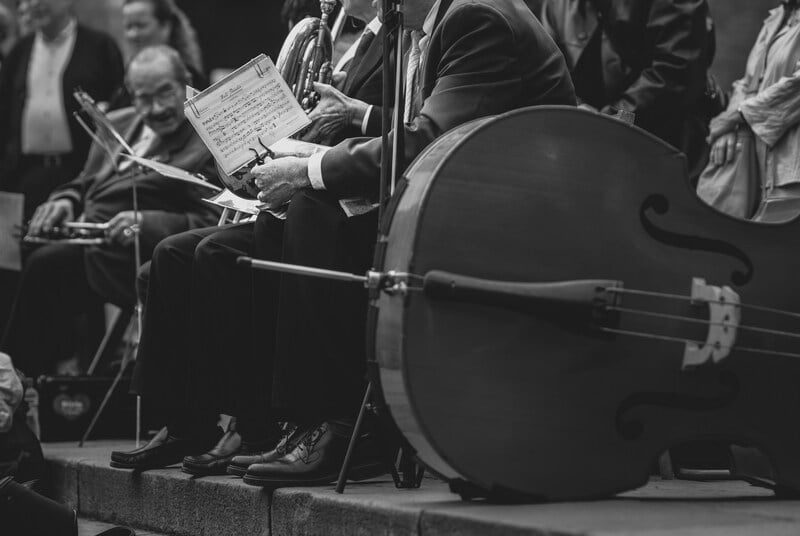

We can all learn from The Social Network, where Trent Reznor and Atticus Ross set the tone perfectly. Their score intensifies the tension and drama but never drowns out the actors. Steer clear of bombastic and overly dramatic music unless you’re going for a comedic effect.
Another strategy is to use music to shape the mood or even drive the narrative.
Edgar Wright did this brilliantly in Baby Driver, editing the film to sync with the music the main characters listen to on their iPods. Here, the visual cuts match the beat of the music, creating a unique cinematic rhythm.
Let the Music Lead the Way
However, sometimes what a scene really needs is no music at all.
Paul Thomas Anderson’s Phantom Thread is a prime example of this. The silence in key scenes amplifies the emotional intensity, making every moment and expression count even more.
06 Use the Sound of Silence
Gentle classical piano theme that stops as soon as Reynolds enters his home is a great intro into an emotionally charged dinner with Alma that’s done without any soundtrack.
Resist the common blockbuster urge to pack every scene with music.
A solid guideline to follow is this: if your actors are delivering strong performances and the music isn’t central to the narrative, try cutting the scene without any soundtrack.
But even if you’re not planning to use a soundtrack or complex multi channel audios, one of the most fascinating things about sound is its ability to stand out and captivate us. In most cases, just by drawing attention to specific elements of sound.
Much of Jordan Peele’s Get Out (2017) atmospheric horror comedy comes from smart sound design.
07 Amplify specific SFX to create Mood
It’s about subtle music and the recurring rhythmic move of the teaspoon that draws us into a strange and moody setting and almost gives us the feeling that Catherine Keener is trying to hypnotize us as well.
On the other hand, playing with SFX doesn’t have to be subtle at all.
Quentin Tarantino championed this approach in his films, especially Kill Bill.
Creating Audio Style
Notice the inspiration he drew from karate films of the ’60s and ’80s with overblown sound of punches, objects flying through the air, and smashing objects.
What was once perceived as an inability to create an authentic sound of the fight turned into a style Tarantino used as a soundtrack for violence.
If all of this sounds confusing, here’s short instructions on how to use what you’ve learned today.
CONCLUSION
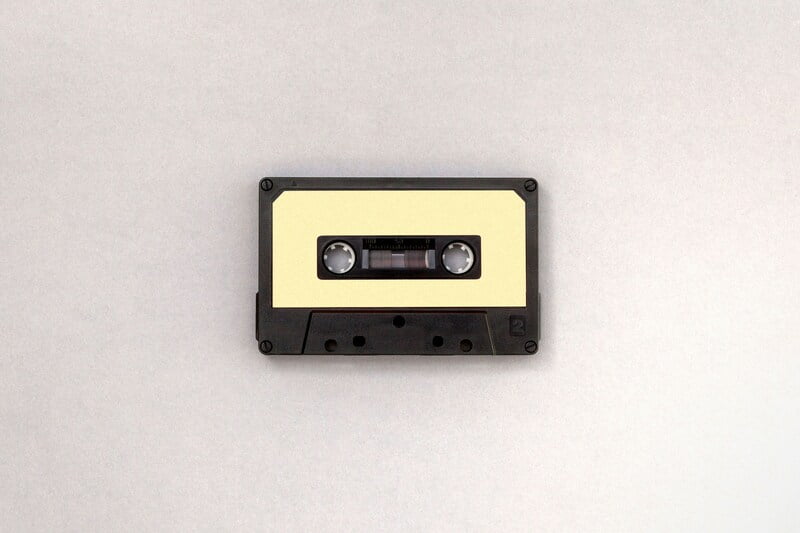

Whatever approach you’re planning to take, make sure you’ve recorded the dialogues properly.
Shoot authentic SFX on location and save them for the editing room.
Next, decide if the soundtrack is an important part of your film. If it is, take it into account for your strategy in the editing room.
Synchronising Audio and Visual Styles
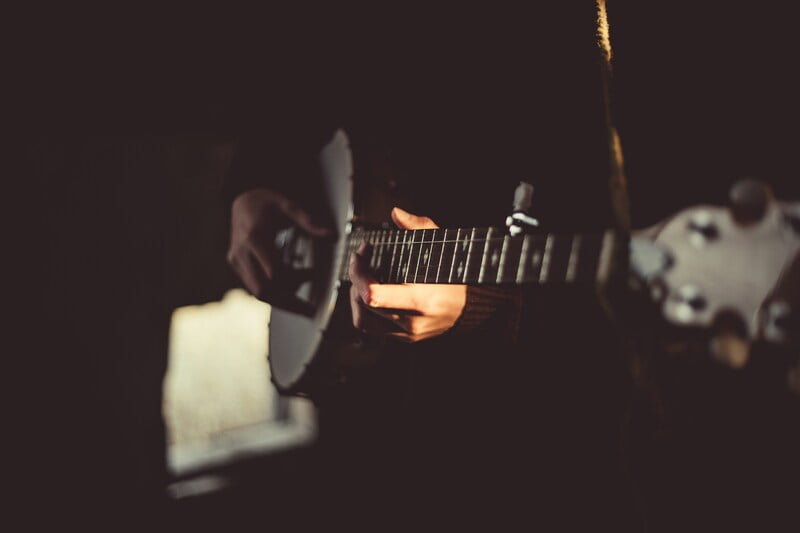

Are you going to use long shots paired with an epic soundtrack like Mallick, or are you looking for more dynamic shorter shots with fast-paced editing in Guy Ritchie’s style? Or you’re somewhere in between?
If playing with a soundtrack sounds out of your league or it’s not an important element of your film, what about the use of SFX?
Does it fall into the category of using it as a style, or do you want to keep it as realistic as possible and let other cinematic elements such as camera movements or acting lead the way?
Knowing this will not only help with sound editing but help with the shooting by saving you time and money.
Make Decisions In the Editing Room
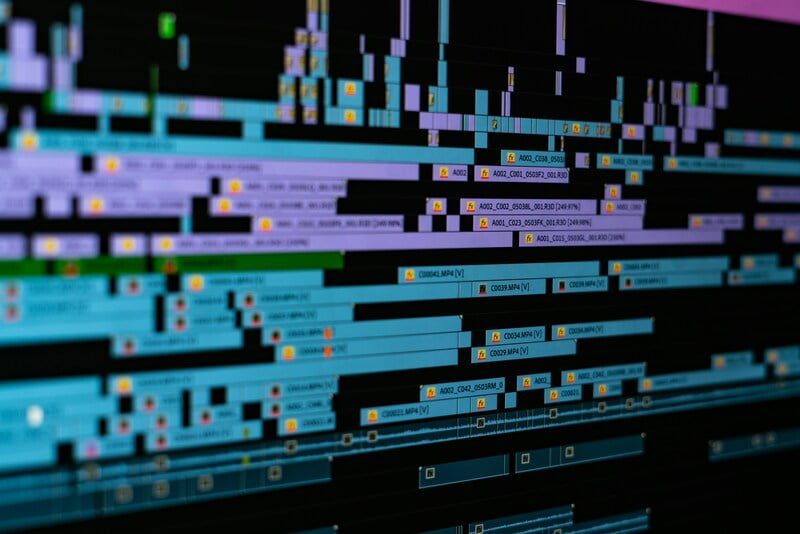

After you review your material after daily shooting or in the editing room, think about the way you can amplify certain elements of your sound design to tell a more impactful story.
With today’s software, it’s easier than ever to explore sound design options that can level up the story you’re trying to tell.
Use the power of sound design wisely and let our HayotFilms team know how it went.
Good luck!

